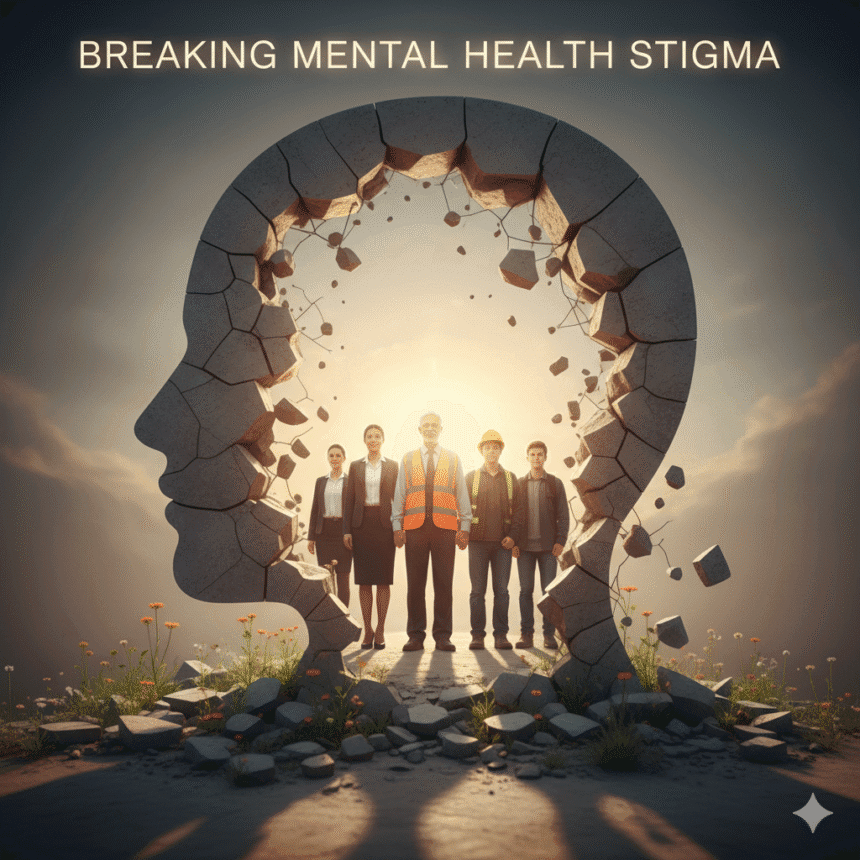Mental health has been part of public conversations for many years, but stigma still prevents millions of people from getting the help they need. Even in 2025, many individuals hesitate to talk about their struggles with anxiety, depression, or other conditions because of fear, shame, or discrimination.
Breaking the stigma is more than an awareness campaign—it is a matter of public health, equality, and human dignity. As we move further into this decade, reducing stigma is essential for creating a society where mental well-being is valued as much as physical health.
What Is Mental Health Stigma?
Stigma refers to negative attitudes and beliefs that cause people to view mental health struggles as a weakness or personal failure. It shows up in two major ways:
- Public stigma: Stereotypes and discrimination from society.
- Self-stigma: When individuals internalize these stereotypes and feel shame.
Examples include labeling someone with depression as “lazy,” dismissing anxiety as “overthinking,” or assuming people with schizophrenia are dangerous. These harmful beliefs create barriers to treatment, recovery, and acceptance.
Why Stigma Still Exists in 2025
Despite progress, stigma continues for several reasons:
- Cultural norms: In many communities, talking about emotions or seeking therapy is still seen as taboo.
- Misinformation: Myths about mental illness remain widespread, especially online.
- Workplace fear: Many employees worry that admitting mental health challenges will hurt their careers.
- Media portrayals: Movies and TV shows often exaggerate or misrepresent mental illness.
According to the World Health Organization (WHO), nearly 1 in 8 people worldwide live with a mental disorder, yet stigma remains one of the biggest obstacles to care【WHO, 2022】.
The Cost of Stigma
Stigma does not just affect individuals—it affects entire societies.
1. Barriers to Treatment
The National Alliance on Mental Illness (NAMI) reports that over 50% of U.S. adults with mental illness do not receive treatment【NAMI, 2023】. Stigma plays a major role in this gap, as people fear judgment from family, friends, or coworkers.
2. Worsening Symptoms
When people avoid treatment, symptoms often intensify. Untreated mental illness can lead to substance use, unemployment, homelessness, and suicide.
3. Workplace Productivity Loss
The World Economic Forum estimates that mental health conditions cost the global economy $1 trillion each year in lost productivity【WEF, 2021】. Stigma worsens this by discouraging employees from seeking support.
4. Impact on Families
Families affected by stigma may feel isolated or blamed, reducing their ability to support loved ones effectively.
Shifting Attitudes in Recent Years
The good news is that awareness campaigns, social media, and younger generations have pushed mental health into the spotlight. Celebrities, athletes, and public figures now openly share their struggles, helping to normalize conversations.
A 2023 American Psychological Association survey found that 87% of Gen Z adults say mental health is just as important as physical health, compared to 67% of older generations【APA, 2023】. This shift suggests that younger people are leading the way in breaking stigma.
Why 2025 Is a Turning Point
In 2025, several factors make breaking stigma more urgent than ever:
- Post-pandemic effects: COVID-19 increased global rates of anxiety and depression by 25%, according to WHO【WHO, 2022】. Many people are still dealing with long-term impacts.
- Workplace transformation: Remote and hybrid work have blurred boundaries between work and personal life, making mental health policies a critical priority.
- Digital stress: Constant online exposure contributes to anxiety, comparison culture, and cyberbullying.
- Global crises: Climate change, conflicts, and economic uncertainty are fueling widespread psychological distress.
Addressing stigma in this context is not optional—it is necessary for global resilience.
The Role of Media and Technology
Technology can either fuel stigma or help break it.
- Positive impact: Online therapy apps, mental health podcasts, and campaigns on platforms like TikTok and Instagram are making support more accessible.
- Negative impact: Misinformation spreads quickly online, reinforcing harmful stereotypes.
In 2025, responsible use of media is key. Campaigns must emphasize accurate information and share diverse stories of mental health recovery.
Breaking Stigma in Different Spaces
In the Workplace
Employers can reduce stigma by:
- Offering mental health days as part of leave policies
- Training managers to respond with empathy
- Providing access to therapy through employee assistance programs
According to Mind Share Partners’ 2021 survey, 76% of employees reported at least one mental health symptom in the past year, but many still feared speaking up at work【Mind Share, 2021】.
In Schools
Students face rising stress, especially with academic pressure and social media. Schools can help by integrating mental health education into curricula and offering on-site counseling.
In Healthcare
Doctors and nurses must receive training to treat mental health with the same seriousness as physical health. Integration of mental health into primary care can reduce stigma and increase access.
In Communities
Faith groups, cultural leaders, and local organizations can play vital roles in normalizing conversations, especially in communities where stigma is strongest.
Practical Steps to Break Stigma
- Talk openly: Share personal stories about mental health struggles and recovery.
- Challenge language: Avoid harmful terms like “crazy” or “weak.” Use respectful language instead.
- Educate yourself and others: Learn the facts about mental illness and correct myths.
- Support loved ones: Listen without judgment and encourage professional help when needed.
- Advocate for policies: Push for affordable mental healthcare and workplace protections.
The Future of Mental Health Without Stigma
Breaking stigma in 2025 is not just about awareness—it’s about action. A world free of stigma would look like this:
- People seeking therapy without fear of judgment
- Workplaces treating mental health equally to physical health
- Schools teaching emotional skills alongside academics
- Communities supporting, not shaming, those in crisis
Reducing stigma creates a healthier, more compassionate society where everyone can thrive.
Conclusion
Mental health stigma continues to hold people back from the support they need. In 2025, with rising global challenges and growing awareness, breaking stigma is more important than ever.
By talking openly, challenging harmful beliefs, and pushing for systemic change, we can create a future where mental health is valued and respected. The truth is simple: when we break stigma, we build stronger people, families, and communities.










